![]()
![]()
![]()
Use LEFT and RIGHT arrow keys to navigate between flashcards;
Use UP and DOWN arrow keys to flip the card;
H to show hint;
A reads text to speech;
16 Cards in this Set
- Front
- Back
|
Etruscan |
Flourished 700-509 BCE |
|
|
Roman |
Flourished 509 BCE-337 AD |
|
|
Arch, Barrel vault, and Groin vault |

|
|
|
Timeline for Ancient Rome |
-509 BCE- Rome overthrows the Etruscan Kings -275 BCE- Rome controls the whole of Italy -150 BCE- Rome takes control of Macedonia and Greece -146 BCE- Rome defeats carthage -44 BCE- Rome conquers Gaul(France) -31 BCE- Augustus (Octavian) defeats Mark Anthony and Cleopatra in Egypt -27 BCE- Julius Caesar murdered, Augustus came to throne TURNING POINT TO BCE TO CE!!
*14 CE- Death of Augustus *98-117 CE- Trajan rules. Roman empire at it's largest *312-337 CE- Constantine rules. Beginning of the end.
|
|
|
Republican |
509-27 BCE |
|
|
Augustan |
27 BCE-14 CE |
|
|
Imperial |
14-180 BCE |
|
|
Late Empire |
180 CE-395 CE |
|
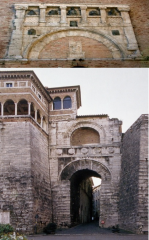
|
1st: Porta Marzia Perugia 2nd: Porta Augusta 3rd-2nd Century BCE |
|
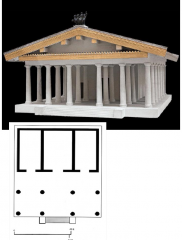
|
Reconstruction of typical 6th C. EtruscanTemple, based on Vitruvius’s treatise onarchitecture |
|
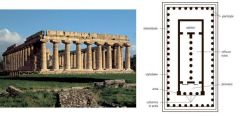
|
Plan of Temple of Hera I, Poseidonia (RomanPaestum). c. 550–540 BCE. |
|

|
*1st: Metropolitan Kouros. c. 600 BCE. *2nd:Master Sculptor Vulca (?). Apollo. c. 510–500 BCE. Height 5’ 10”. *3rd:Head of a Man (traditionally known as “Brutus”). |
|
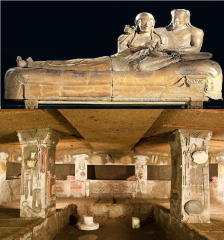
|
*1st:Sarcophagus with reclining couple, from Cerveteri, Italy,ca. 520 BCE. Painted terracotta, life-size *2nd:Interior of the Tomb of the Relief,Cerveteri, Italy, 3rd C. BCE |
|
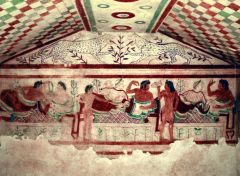
|
Interior of the Tomb of the Leopards, Tarquinia, Italy, ca. 480-470 BCE |
|

|
*Aulus Metellus (The Orator). c. 80 BCE. Height 5’ 11”. *Portrait Head of an Elder. c. 80 BCE. |
|
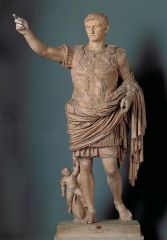
|
*Augustus of Primaporta. Early 1st century CE. Height 6’ 8”. This is the first Roman emperor, Augustus, which means, “Supreme Ruler.” He was the grandnephew and adopted son of Julius Caesar. When Augustus became emperor, he reinstated the Roman Senate, the ruling entity during the Roman Republic; yet, he also made himself an autocrat and claimed that his family was descendent of the Gods. The sculpture reflects the kind of paradox Augustus created with his government because he borrows two sculptural styles that have contradictory symbolism. The artist took the orator’s gesture from Republican art that shows portraits of actual Romans, like the sculpture of the Roman Senator Aullus Metellus. The stance and perfect physique comes from Classical Greek sculptures of gods and idealized athletes such as Polykleitos’ sculpture of the Doryphoros. Here, the reference to the Roman sculpture indicates he had the support of the Roman Senate and was working within their tradition of debate and reason. The reference to Classical Greece provides an idealized element, comparing Augustus to Greek notions of the perfection and harmony of the Divine. It also associates Augustus with the political golden age of Classical Athens.
|

